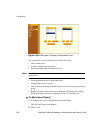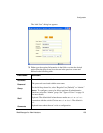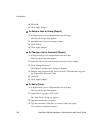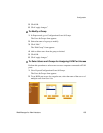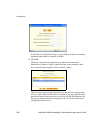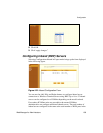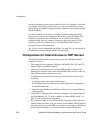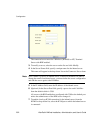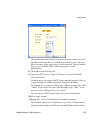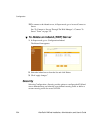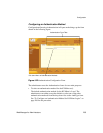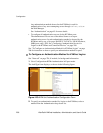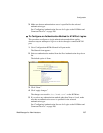Configuration
200 AlterPath KVM/net Installation, Administration, and User’s Guide
whole infrastructure (master and cascaded devices). Even though it is possible
to configure a KVM port on the master or on any cascaded device for each
inband server, all inband configuration and connections are done through the
master KVM/net.
For more complete access and as a backup to inband connection failures,
inband servers can also be connected to KVM ports on the KVM/net. This
enables out-of-band access to the inband server so that if the inband
connection fails, the user is able to reconnect to the server using a KVM
connection. This also enables users to view the BIOS, POST, and boot
messages for server administration.
See “Server Access: Inband and Out of Band” on page 29, for a description of
the differences between inband and KVM connections.
Prerequisites for Inband Access to RDP Servers
The following prerequisites must be met in order for a KVM/net inband
connection to work:
• The connected server must be a Windows (Win2000, 2003, XP, and NT)
Terminal Server with RDP enabled.
Windows Terminal Servers do not have RDP enabled by default: The
administrator of these servers must enable RDP on the server in order for
the KVM/net inband connection to work.
• A KVM/net user who needs to access any inband server must have the
following:
• A valid account created on the inband server.
The KVM/net does not authenticate or offer permissions configuration
for inband connections.
• Internet access and Microsoft Internet Explorer 6 on a remote Windows
client machine.
• The Windows Terminal Server must be configured on the Inband page of
the Web Manager. See “To Add or Modify an inband (RDP) Server” on
page 201 for configuration instructions.
• If you want to enable an out-of-band, KVM connection as back up for an
inband connection failure or if you want to view the BIOS, POST, and boot
messages on the server, the RDP server must be connected to a KVM port
on the master KVM/net or on a cascaded and configured KVM unit.



